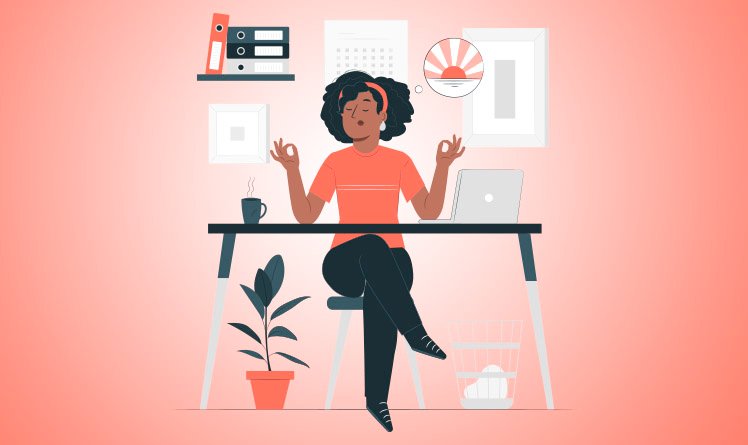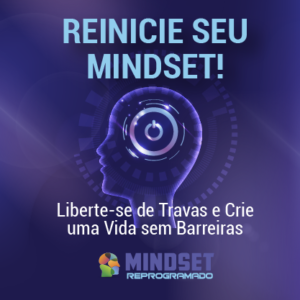NLP Modalities and Submodalities: What They Are and How They Produce Rapid Change

|
Getting your Trinity Audio player ready...
|
Neuro-Linguistic Programming (NLP) is a powerful approach that has been used for decades to promote rapid and effective change in a wide range of contexts. Within this methodology, NLP modalities and submodalities play a fundamental role. But what exactly are these modalities and submodalities?
How can they help shape our perception of reality and generate profound transformations in our lives? In this article, we will explore these concepts and understand how they can be applied in a practical way.
What are modalities in NLP?
To begin, it is important to understand the concept of modalities. Thus, in NLP, modalities refer to the different sensory systems through which we process the information we receive from the world around us. Simply put, they are the ways in which our senses capture and interpret reality.
These systems are divided into categories: visual, auditory, kinesthetic, olfactory and gustatory.
"In NLP, modalities refer to the sensory systems through which we process the world: visual, auditory, kinesthetic, olfactory, and gustatory. They are the basis of how we perceive experiences and form memories."
Modalities in NLP
Visual
The visual modality refers to the processing of information we receive through vision. Above all, it is the most dominant for most people, being one of the most powerful sensory systems. After all, much of our perception of the world is visual. Thus, within this modality, submodalities such as brightness, color and clarity play a crucial role.
Visual submodalities:
- Size of the mental image
- Image distance
- Location of the image in the visual field
- Image brightness and color
- Image sharpness and focus
- Image movement and speed
Hearing
The auditory modality is related to what we hear. Thus, we have sounds, words, and even the tone of voice, which are processed through this system. In addition, auditory submodalities can include the volume, rhythm, clarity and timbre of the sound.
Auditory submodalities:
- Sound volume
- Sound tone and pitch
- Rhythm and speed of sound
- Location of sound source
- Clarity and sharpness of sound
Kinesthetic
The kinesthetic modality focuses on physical and emotional sensations. Thus, when we experience something, we have a bodily sensation associated with that experience. Thus, this modality encompasses touch, temperature, pressure, and the emotions we feel. Submodalities here can include the intensity of a sensation, temperature, and texture.
Kinesthetic submodalities:
- Muscle pressure and tension
- Body temperature
- Texture and consistency
- Location of sensation in the body
- Movement and fluidity of sensation
Olfactory
The olfactory modality is related to smells. Often, a specific smell can evoke memories and emotions.
Olfactory submodalities:
- Smell intensity
- Familiarity of smell
- Location of the source of the smell
- Pleasantness of smell
- Emotional associations with smell
Gustatory
The gustatory modality is related to flavors. So, when we remember something, we can have a specific taste in our mouth.
Taste submodalities:
- Flavor intensity
- Flavor familiarity
- Location of taste in the mouth
- Taste pleasantness
- Food texture and consistency
NLP Submodalities: What They Are and How They Generate Rapid Change
Now that we understand what modalities are, we can move on to submodalities. Submodalities are the specific qualities within each sensory modality. So, think of them as the “fine adjustments” we make to our perception. For example, as we showed above, within the visual modality, submodalities can include the clarity of an image, the brightness, the color, or even the size of what we are viewing.
Above all, submodalities function as “adjustment knobs” that allow us to internally modify the way we perceive experiences. In this way, by altering these submodalities, we can change how we feel about a given situation, directly influencing our emotional and behavioral states.
Let's explore some of the main submodalities:
Size, distance and location
The size, distance, and location of a mental image or bodily sensation can significantly affect our emotions and behaviors. For example, an image of a lion may seem less frightening if we imagine it as small and far away.
Brightness and color
The brightness and color of a mental image can also influence our emotions. In this sense, brighter, more vibrant colors tend to evoke more intense emotions, while darker, duller colors can be associated with more negative emotions.
Sharpness and focus
The sharpness and focus of a mental image or sound can affect our perception of reality. So if an image is blurry or a sound is distorted, it may be harder for us to process and react to them appropriately.
Movement and speed
The movement and speed of a mental image or bodily sensation can affect our motivation and energy. Thus, moving images tend to be more engaging and stimulating than static images.
Volume, tone and rhythm
The volume, tone, and rhythm of an internal or external sound can affect our emotional state. Thus, a loud, high-pitched sound can be stimulating, while a soft, low-pitched sound can be relaxing.
Pressure, temperature and texture
The pressure, temperature, and texture of a bodily sensation can affect our perception of comfort or discomfort. Thus, a feeling of pressure may be interpreted as stress, while a feeling of heat may be associated with emotions positive.
Smell and taste
Smell and taste can evoke deep memories and emotions. For example, a familiar smell may bring back childhood memories, while a specific taste may be associated with a pleasant or unpleasant experience.
In this sense, by adjusting these submodalities, it is possible to modify the intensity of an emotion or physical sensation, which can be useful for relieving pain or reducing anxiety.
"Submodalities are the specific characteristics of each sensory modality. For example, in visual modality, they include brightness, color, sharpness, and size of the mental image. Changing these allows us to quickly modify emotional and behavioral states."
Why are submodalities important?
Submodalities are crucial in NLP because they provide a “leverage” to quickly alter the way we experience a situation. Thus, by understanding and manipulating these submodalities, we can change our emotional response to a stimulus, reprogramming limiting beliefs and even overcome fears and phobias. In other words, it is as if we had remote control over our perceptions, allowing fine adjustments that result in big changes.
Working with submodalities can bring numerous benefits, such as:
- Rapidly changing emotional states: Allows you to quickly change how you feel about a situation.
- Overcoming trauma and fears: Helps reduce the impact of negative experiences.
- Improved self-confidence: By reprogramming limiting beliefs, you can build a more positive mindset.
Is there scientific evidence behind submodalities?
Although NLP still generates debate in the scientific community, many of its techniques — especially work with submodalities — are indirectly supported by neuroscience studies on memory, emotion and brain plasticityAfter all, the brain doesn't accurately distinguish between a real memory and one visualized with sensory intensity. This explains why changes in internal images cause such real and profound emotional effects.
Application of NLP submodalities
Working with submodalities doesn't require equipment or long sessions—just a little practice and attention to your internal representations. Therefore, you can use the techniques when you wake up, before an important meeting, or whenever you feel an emotional blockage arising. The more you practice, the easier it will be to reconfigure your emotional state in minutes.
Change of emotional state
One of the most common uses of submodalities is to change your emotional state. For example, if you’re feeling anxious about an upcoming event, you might visualize the situation in a less intimidating way by reducing the size of the image or decreasing the volume of associated negative thoughts. Overall, these small changes can have a profound impact on your emotional state.
Overcoming phobias and fears
Submodalities are also used in NLP to overcome phobias and fears. A common technique is “desensitization,” where the person is encouraged to imagine the feared object or situation in a less threatening way by adjusting submodalities such as the color, brightness, and distance of the mental image. This helps to reduce the intensity of the fear.
Reprogramming limiting beliefs
Limiting beliefs are often associated with certain submodalities. For example, a negative belief might be accompanied by a large, dark mental image. As we shift these submodalities to something more positive, such as clarity and bright colors, we can begin to reprogram our minds to adopt more empowering beliefs.
Improved motivation and self-esteem
By amplifying the submodalities related to positive emotions, such as pride and confidence, we can increase our motivation and self-esteem. Consequently, we can achieve our goals and feel better about ourselves.
Optimization of sports and professional performance
Submodalities can also be used to improve our performance in sports and professional activities. In this way, by visualizing mental images of success, with specific submodalities, we can increase our concentration, focus and skill.
Conflict resolution and relationship improvement
By understanding the submodalities of our own thoughts and emotions, as well as those of others, we can improve our communication and resolve conflicts more effectively. This way, we can build healthier, more lasting relationships.
How to work with NLP submodalities?
Identification of submodalities
The first step in working with submodalities is identifying which ones are at play in a given experience. Thus, identifying NLP submodalities is a process that involves perceiving and analyzing the sensory characteristics that shape our internal experiences. Here are some ways to identify these submodalities:
Visualization exercise
One of the most effective methods for identifying submodalities is through visualization. Try following these steps:
- Close your eyes and think of a significant memory, which can be positive or negative.
- Observe the image that arises in your mind. Ask yourself:
- What is the size of the image? Is it big or small?
- Is the image close or far away?
- What are the predominant colors? Is it colored or black and white?
- Is the image bright or dull?
- Is the image sharp or blurry?
These features are visual submodalities that you can begin to identify.
Hearing analysis
After exploring the visual modality, move on to the auditory modality:
- Remember a sound that is associated with the memory you visualized.
- Ask yourself:
- How loud is the sound? Is it loud or soft?
- Is the sound high or low?
- Does it have a specific rhythm? Is it fast or slow?
- Does the sound seem close or far away?
These questions will help identify auditory submodalities.
Kinesthetic exploration
Finally, explore the kinesthetic submodalities:
- Focus on the physical sensations you feel as you recall the memory.
- Ask yourself:
- What are you feeling? Is it a sensation of heat, cold, pressure, or lightness?
- Is this sensation intense or mild?
- Where is this sensation located in your body? Is it in a specific part or does it spread?
- Is the sensation continuous or intermittent?
These reflections will help identify kinesthetic submodalities.
Associated vs. Disassociated
An important distinction in submodalities is between being associated or dissociated from an experience.
- Associated: You see the image with your own eyes, you feel the emotions directly.
- Dissociated: You observe yourself in the situation, as if you were watching a movie.
Identifying whether you are in an associated or dissociated state can influence how you process the experience.
Recording and reflection
After going through these exercises, it’s helpful to write down your findings. So, record the submodalities you identified for each memory or emotion. Not only does this help solidify your understanding, but it also serves as a valuable resource for future NLP practice.
Regular practice
Identifying submodalities is a skill that improves with practice. Thus, the more familiar you become with your own internal representations, the easier it will be to manipulate these submodalities to achieve desired changes in your emotions and behaviors.
Techniques for changing submodalities
Identifying and altering NLP submodalities is a powerful technique that can transform the way we perceive experiences and emotions. Here are some effective techniques for making these changes:
Swish Technique
The Swish technique is one of the best known in NLP for changing submodalities. It involves replacing a negative image with a positive one. The process is as follows:
- First, identify the negative image you want to change. For example, an image that evokes fear or anxiety.
- Next, create a positive image that you would like to have in place of the negative one. This should be an image that represents a desired state, such as confidence or happiness.
- Finally, visualize the negative image and then quickly swish to the positive image, almost like a transitional movement. The goal is for the positive image to quickly overlap with the negative one, creating a new association.
Change in size and distance
This technique involves changing the size and distance of a mental image to change the emotion associated with it:
- Visualize the image that causes discomfort. Then ask yourself:
- What is the size of the image? Is it big or small?
- Is it close or far from you?
- Then, reduce the size of the image or move it further away from you. For example, if the image is very close, imagine it moving away until it becomes a small dot on the horizon. This change can reduce the intensity of the negative emotion.
Changing colors and brightness
The colors and brightness of a mental image can strongly affect our emotions. To use this technique:
- Identify the image that evokes a negative emotion.
- Next, change the colors in the image to softer or more faded tones. For example, if the image is very vibrant and intense, make it paler or grayscale.
- Finally, adjust the brightness of the image, making it darker or lighter, depending on the effect you want. Darker images tend to evoke less emotion.
Sound manipulation
The sounds we associate with experiences also have submodalities that can be altered:
- Identify the sound that is associated with your negative experience. Ask yourself:
- How loud is the sound? Is it loud or soft?
- Is it acute or severe?
- This way, change the volume of the sound, making it lower or higher as needed.
- Change the pitch of the sound. For example, if the sound is high-pitched and annoying, imagine it becoming low-pitched and soft, or even turning it into a funny sound, like a cartoon character.
Dissociation
Dissociation is a technique that involves observing the experience from the outside, rather than being immersed in it:
- Visualize the situation that causes you discomfort, but this time, imagine yourself watching a scene from a movie.
- So, observe yourself in the situation, as if you were watching a character on a screen. This can help reduce the emotional charge associated with the experience.
Anchoring
Anchoring is a technique that associates an emotional state with a specific stimulus and is one of the most widely used in NLP. Follow these steps:
- Identify a positive emotional state that you would like to access in times of stress or anxiety.
- Then create an anchor: it could be a tap of a finger, a word, or a phrase that you repeat.
- Finally, activate the anchor while focusing on the positive emotional state. Over time, you will be able to access this positive emotional state whenever you activate the anchor.
This technique is often used in moments of anxiety and stress, in situations where you would be uncomfortable.
Reframing
The reframing or resignification involves changing the interpretation of an experience:
- Identify a situation that you perceive negatively.
- Reframe the situation in positive terms. Ask yourself:
- What can I learn from this?
- How can this be an opportunity for growth?
- This shift in perspective can alter the submodalities associated with the experience, making it more manageable.
Guided Visualization Exercise
Guided imagery can be a powerful tool for shifting submodalities and can be used during a meditation:
- Close your eyes and visualize a situation that evokes negative emotions.
- Then ask yourself to describe the image, sound, and associated sensations.
- Guide yourself to change these submodalities, as mentioned in the previous techniques, and visualize the new representation you have created.
These techniques are just a few of the many ways to work with NLP submodalities. Regular practice and experimentation with different approaches can lead to significant changes in emotions and behaviors, helping you achieve a more balanced and satisfying life.
“Techniques like Swish, dissociation, reframing, anchors, and guided visualization apply shifts in submodalities to create new, positive mental and emotional patterns.”
In short…
NLP modalities and submodalities are powerful tools that can be used to promote rapid and effective changes in how we perceive and react to the world around us. By understanding and applying these concepts, you can take control of your emotions, overcome limitations and live a more fulfilled and conscious life.
Remember, the key to success lies in practice and the willingness to explore these techniques in depth. With that in mind, start experimenting and adjusting your submodalities today and see how small changes can yield big results.
Recommended Reading:
Reset Your Mindset: Break Free from Blockages and Create a Life Without Barriers
Image: Freepik
FAQ – Questions and Answers about Modalities and Submodalities:
1. What are modalities in Neuro-Linguistic Programming (NLP)?
In NLP, modalities refer to the sensory systems through which we process the world: visual, auditory, kinesthetic, olfactory, and gustatory. Thus, they are the basis for how we perceive experiences and form memories.
2. What are NLP submodalities?
Submodalities are the specific characteristics of each sensory modality. For example, in visual sensory modality, they include brightness, color, sharpness, and size of the mental image. Altering these allows for rapid modification of emotional and behavioral states.
3. How does NLP use submodalities to generate rapid change?
NLP uses fine-tuning of submodalities to transform the way we perceive experiences. This allows us to change emotions, overcome fears, reprogram limiting beliefs, and increase motivation—all in a practical and effective way.
4. What are the main NLP techniques that use submodalities?
Techniques such as Swish, dissociation, reframing, anchors and guided visualization apply changes in submodalities to create new positive mental and emotional patterns.
5. How to identify submodalities in a memory or emotion?
You can identify submodalities by observing characteristics such as color, brightness, distance, volume, and physical sensation when viewing a memory. This helps you understand and control the intensity of associated emotions.
6. Is it possible to change limiting beliefs with NLP submodalities?
Yes. By changing the submodalities associated with a negative belief (such as dark color and low sound), it is possible to soften its impact and replace it with a new, more positive, empowering belief.
7. What is the difference between being associated or dissociated in an experience?
Being associated means reliving an experience through your own eyes and emotions. Being dissociated means seeing yourself from the outside, as in a movie. Dissociation is an effective NLP technique for reducing negative emotional impacts.
8. Why are submodalities considered a “lever” in NLP?
Because it's internal elements that shape our emotional responses. By adjusting submodalities, you change how you feel, think, and react—quickly and profoundly.
Article originally published on 08/12/2024 and revised on that date.

Marcel Castilho is an expert in neuromarketing, neuroscience, mindfulness and positive psychology. In addition to being an advertiser, he also has a Master's degree in NLP – Neurolinguistic Programming. As the owner and founder of the communications agency VeroCom and also of the digital agency Vero Contents, he has been studying human behavior for over 30 years.


